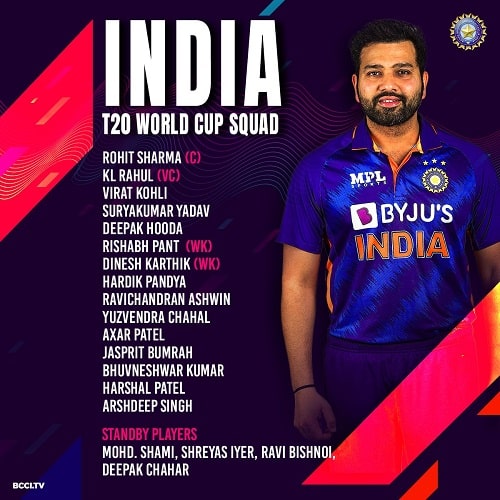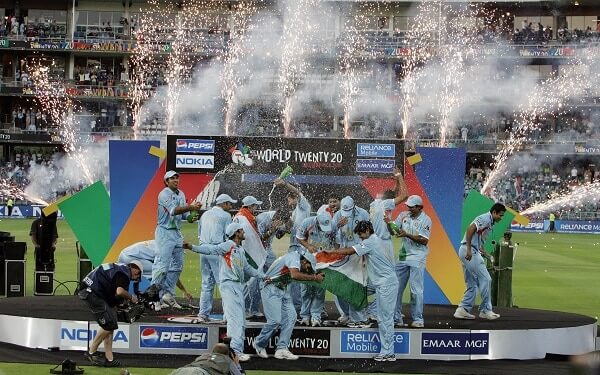The Indian Premier League has long been the envy of domestic cricket leagues around the world. Purely from a broadcasting perspective, a single IPL match is now valued at an astronomical $22 million, and the league has also unearthed a veritable treasure chest of cricketing gems for India, including current superstars Rishabh Pant and Hardik Pandya. But counterintuitively, these riches haven’t translated into success on the biggest stage. For while India will come into the T20 World Cup as the number one ranked T20I side, India has won only one T20 World Cup title, and has missed the semi-final stage more often than not. So, what’s ailing India?
It’s a difficult problem to solve, including because it could be argued that there is no problem at all. The T20 format is the game’s shortest and most fickle, and accordingly the biggest leveller, in the same way tennis greats are more vulnerable over three sets than over five. There is a reason Associate nations have had significantly more success in limited overs cricket than in Test cricket, so it follows that India’s results in the T20 format may not always reflect the country’s general might in the game.
But the vicissitudes inherent to the T20 format do not explain why India has not lifted the T20 World Cup trophy since the inaugural edition in 2007, despite the billions of dollars that have flowed into the country – and into the game – through the IPL since then. 15 years is a long time in international cricket; effectively, two generations of cricketers have failed to win another title for India in the six T20 World Cups that have followed the first.
The conundrum deepens when you consider India’s statistics in the format. Across all T20 cricket, India has comfortably the highest batting average (29.53), the highest strike rate (133) and even the most hundreds (10) of any major cricket-playing nation.
Even with the ball – traditionally, India’s weaker discipline in the format – India’s numbers stack up. India boasts a better economy rate (7.64) than all major nations other than Australia (marginally ahead at 7.62) and Pakistan (7.28), and sits fourth in terms of bowling average.

In T20 World Cups, India’s numbers are largely unchanged from its overall statistics in the format, except for one key metric: strike rate. India’s strike rate drops from 133 to 124 in T20 World Cups. It may seem innocuous, but it’s a gap that, across a T20 innings, is equivalent to the difference between a team score of 150 and 160 – often the difference between winning and losing.
Of course, statistics tell only part of the story. The fundamental issue is that across all formats, India has typically struggled on the world stage in the last decade or so because its key players have a penchant for going missing when they are needed most. India’s long list of failures at the most critical stages makes for ugly reading: the T20 World Cup final in 2014, the ICC Cricket World Cup semi-finals in 2015 and 2019, the T20 World Cup semi-final in 2016, the ICC Champions Trophy final in 2017, and even the World Test Championship final in 2021.
The good news is, there doesn’t appear to be a fundamental problem with India as far as talent, ability or set-up are concerned; the current group of players blends an exciting mix of youth and experience, with India’s statistics in the format – and its number one ranking – reflecting an innate mastery of the format at large.
The bad news is, there is no magic formula India can deploy on how to win the biggest moments on the biggest stage. It’s something that India’s players will largely need to teach themselves, in the same way Australia’s players have done for decades. Such is India’s financial and cricketing might, the floodgates of success in ICC tournaments may soon open up.
But it is no fait accompli. After all, victory in sport is often decided by the quite simple question of who wants it more, and on the international stage – as for any other sport – cricketers covet world titles above all else.
FUN FACT: The Indian Premier League is by far the richest cricketing league in the world, with a recent rights deal valuing the tournament at AUD$9 billion. The next closest is Australia’s Big Bash League, which was recently valued at AUD$1.2 billion – but only in combination with all other cricket matches played in Australia. From next year, the Big Bash League will also be broadcast into Indian homes as part of a 7-year, AUD$250 million rights deal with Disney.




